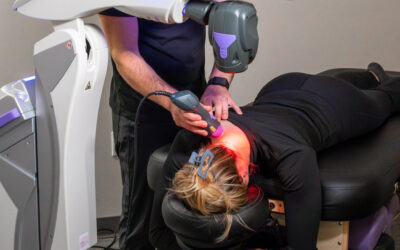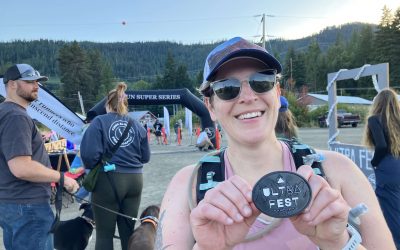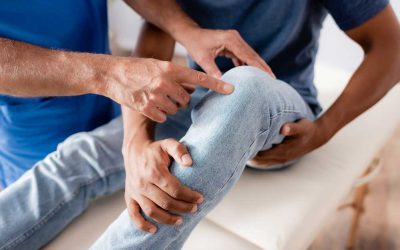Having knee pain can be an extremely frustrating and seemingly endless experience; understanding it is another beast in itself. Our Seattle and Portland Chiropractic clinics see many patients who suffer from knee pain.
Here you will learn:
• Basic knee anatomy and structure
• The 2 categories of knee pain: traumatic vs. non-traumatic
• The most common non-traumatic knee pains we see in our clinic
• What a knee evaluation will look like (see video)
Let’s dive in…
Basic Knee Anatomy
While the knee doesn’t get all the credit of being a wildly mobile and complex joint like the hip or shoulder, don’t be fooled, there’s still A LOT going on in the knee!
There are numerous structures in and around the knee, but here’s a quick list of the more commonly injured structures we see here in our Seattle & Portland Chiropractic clinics:


Traumatic vs Non-Traumatic Knee Pain
The knee is plenty complex, so let’s try to break it down and simplify your pain some.
There are two major categories of knee pain, Traumatic knee pain, and Non-traumatic knee pain.

If you believe you have experienced a traumatic knee injury, I strongly recommend you get an evaluation from a healthcare provider ASAP, as this has a higher potential need for further medical testing such as X-ray or MRI.
Our docs over at Tangelo Chiropractor + Rehab in Seattle and Portland would be ecstatic to work with you through this process. You can expect an examination of your knee to look something like this:
The 2 Most Common Non-Traumatic Knee Injuries
Two of the most common non-traumatic knee pains we see in our clinics are patellar tendinopathy and patellofemoral pain syndrome (PFPS). PFPS can also be referred to as biomechanical knee pain.
Let’s break them down.
Patellar tendinopathy
Patellar Tendinopathy is categorized into infrapatellar (below the knee cap) or suprapatellar (above the knee cap) pain.
This type of knee pain is common in those who perform a lot of explosive jumping activities, such as basketball or volleyball, hence it also gets the nickname of “jumper’s knee.”
The infrapatellar and suprapatellar tendon act like springs to help absorb and generate force when we run, jump, sprint, land on the ground, and push off of the ground.
If we increase the demand being placed on these tendons by increasing the frequency, intensity, or duration of our exercise routine too much, too quickly, we push the tendons beyond the boundaries of what they are capable of sustaining, resulting in what you feel as pain.
REST IS NOT THE ANSWER!
Contrary to what you may have heard before, rest is not always the key. Will you feel better with rest? Yes. Is rest a solution to the original problem that caused your knee pain? Certainly not.
We will likely modify your exercise routine though. Finding ways to keep moving and loading other joints without aggravating your knee can be beneficial while we work on building up the capacity of your patellar tendon.
Ultimately, progressions into introducing load and stress into the infra and suprapatellar tendons are absolutely crucial to increasing your tendon capacity and reducing the recurrence of patellar tendinopathy pain.
A general progression of exercises may look something like this:
- Isometric exercises, such as the wall sit or Spanish Squat
- Isotonic exercises- heavy, slow resistance training, such as a box squat
- Gradual reintroduction into plyometric exercises
For many, this process can take several weeks! Let us help guide you through that process!
PFPS, or biomechanical knee pain
PFPS is typically felt as pain that occurs directly around the patella (aka knee cap), or pain that feels directly underneath it.
While symptoms can be elicited similarly to patellar tendinopathy, by increasing exercise demand too quickly, PFPS symptoms are often derived from biomechanical and muscular imbalances during movement, whether it’s walking, running, lifting, or exercising.
It may be tempting to only evaluate the knee, as it is the site of pain, but weakness and motor control imbalances in and around the hip and/or foot and ankle complex are often huge culprits to this type of knee pain!
In evaluating the biomechanical and muscular imbalances, your stability and control in a single leg stance position are highly valuable! You can see two of my favorite tests I like to perform in the video linked above. Give them a try and see how you do!
After we identify any imbalances or deficiencies present, the ultimate goal is to correct them through a structured functional rehab program tailored specifically to your needs. Again, check out two of my favorite introductory videos exercises in the video linked above!
Find relief from your knee pain
As you can see, deciphering your knee pain can be very complex, and these are only two of the possibilities amongst many! If you are experiencing any form of knee pain, schedule an appointment and let us help you!


